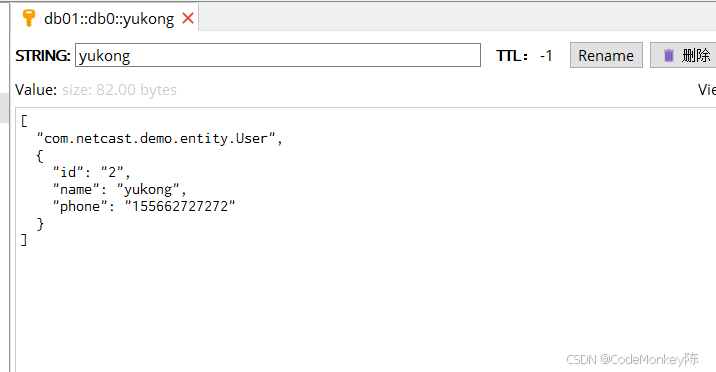前言:
目前java操作redis的客户端有jedis跟Lettuce。在springboot1.x系列中,其中使用的是jedis,
但是到了springboot2.x其中使用的是Lettuce。 因为我们的版本是springboot2.x系列,所以今天使用的是Lettuce。关于jedis跟lettuce的区别:Lettuce 和 Jedis 的定位都是Redis的client,所以他们当然可以直接连接redis server。Jedis在实现上是直接连接的redis server,如果在多线程环境下是非线程安全的,这个时候只有使用连接池,
为每个Jedis实例增加物理连接Lettuce的连接是基于Netty的,连接实例(StatefulRedisConnection)可以在多个线程间并发访问,
应为StatefulRedisConnection是线程安全的,所以一个连接实例(StatefulRedisConnection)就可以满足多线程环境下的并发访问,
当然这个也是可伸缩的设计,一个连接实例不够的情况也可以按需增加连接实例。
依赖:
<dependencies><dependency><groupId>org.springframework.boot</groupId><artifactId>spring-boot-starter-web</artifactId></dependency><dependency><groupId>org.springframework.boot</groupId><artifactId>spring-boot-starter-data-redis</artifactId><version>2.1.3.RELEASE</version></dependency><!-- test单元测试用 --><dependency><groupId>org.springframework.boot</groupId><artifactId>spring-boot-starter-test</artifactId><scope>test</scope></dependency><!-- redis依赖commons-pool 这个依赖一定要添加 --><dependency><groupId>org.apache.commons</groupId><artifactId>commons-pool2</artifactId><version>2.6.2</version></dependency>
</dependencies>
application.yml配置
server:port: 8989
spring:redis:host: 127.0.0.1port: 6379# 密码 没有则可以不填password: 123456# 如果使用的jedis 则将lettuce改成jedis即可lettuce:pool:# 最大活跃链接数 默认8max-active: 8# 最大空闲连接数 默认8max-idle: 8# 最小空闲连接数 默认0min-idle: 0
redis配置
接下来我们需要配置redis的key跟value的序列化方式,默认使用的JdkSerializationRedisSerializer 这样的会导致我们
通过redis desktop manager显示的我们key跟value的时候显示不是正常字符。 所以我们需要手动配置一下序列化方式 新建一个
config包,在其下新建一个RedisConfig.java 具体代码如下/*** @Auther: yukong* @Date: 2018/8/17 14:58* @Description: redis配置*/
@Configuration
@AutoConfigureAfter(RedisAutoConfiguration.class)
public class RedisConfig {/*** 配置自定义redisTemplate* @return*/@BeanRedisTemplate<String, Object> redisTemplate(RedisConnectionFactory redisConnectionFactory) {RedisTemplate<String, Object> template = new RedisTemplate<>();template.setConnectionFactory(redisConnectionFactory);//使用Jackson2JsonRedisSerializer来序列化和反序列化redis的value值Jackson2JsonRedisSerializer serializer = new Jackson2JsonRedisSerializer(Object.class);ObjectMapper mapper = new ObjectMapper();mapper.setVisibility(PropertyAccessor.ALL, JsonAutoDetect.Visibility.ANY);mapper.enableDefaultTyping(ObjectMapper.DefaultTyping.NON_FINAL);serializer.setObjectMapper(mapper);template.setValueSerializer(serializer);//使用StringRedisSerializer来序列化和反序列化redis的key值template.setKeySerializer(new StringRedisSerializer());template.setHashKeySerializer(new StringRedisSerializer());template.setHashValueSerializer(serializer);template.afterPropertiesSet();return template;}}其中@Configuration 代表这个类是一个配置类,然后@AutoConfigureAfter(RedisAutoConfiguration.class) 是让我们这个配置类
在内置的配置类之后在配置,这样就保证我们的配置类生效,并且不会被覆盖配置。其中需要注意的就是方法名一定要
叫redisTemplate 因为@Bean注解是根据方法名配置这个bean的name的。
测试
package com.netcast.demo;import com.netcast.demo.entity.User;
import org.junit.Test;
import org.junit.runner.RunWith;
import org.springframework.beans.factory.annotation.Autowired;
import org.springframework.boot.test.context.SpringBootTest;
import org.springframework.data.redis.core.RedisTemplate;
import org.springframework.test.context.junit4.SpringRunner;/*** @program: demo* @description:* @author: dchen* @create: 2019-11-14 14:53**/
@RunWith(SpringRunner.class)
@SpringBootTest
public class RedisTest {@Autowiredprivate RedisTemplate redisTemplate;@Testpublic void redisTest() {// redis存储数据String key = "name";redisTemplate.opsForValue().set(key, "yukong");// 获取数据String value = (String) redisTemplate.opsForValue().get(key);System.out.println("获取缓存中key为" + key + "的值为:" + value);User user = new User();user.setId("2");user.setName("yukong");user.setPhone("155662727272");String userKey = "yukong";redisTemplate.opsForValue().set(userKey, user);User newUser = (User) redisTemplate.opsForValue().get(userKey);System.out.println("获取缓存中key为" + userKey + "的值为:" + newUser);}
}
结果:
中文成功显示,并且对象在redis以json方式存储,代表我们配置成功。下列的就是Redis其它类型所对应的操作方式opsForValue: 对应 String(字符串)
opsForZSet: 对应 ZSet(有序集合)
opsForHash: 对应 Hash(哈希)
opsForList: 对应 List(列表)
opsForSet: 对应 Set(集合)







)




)




)



)

